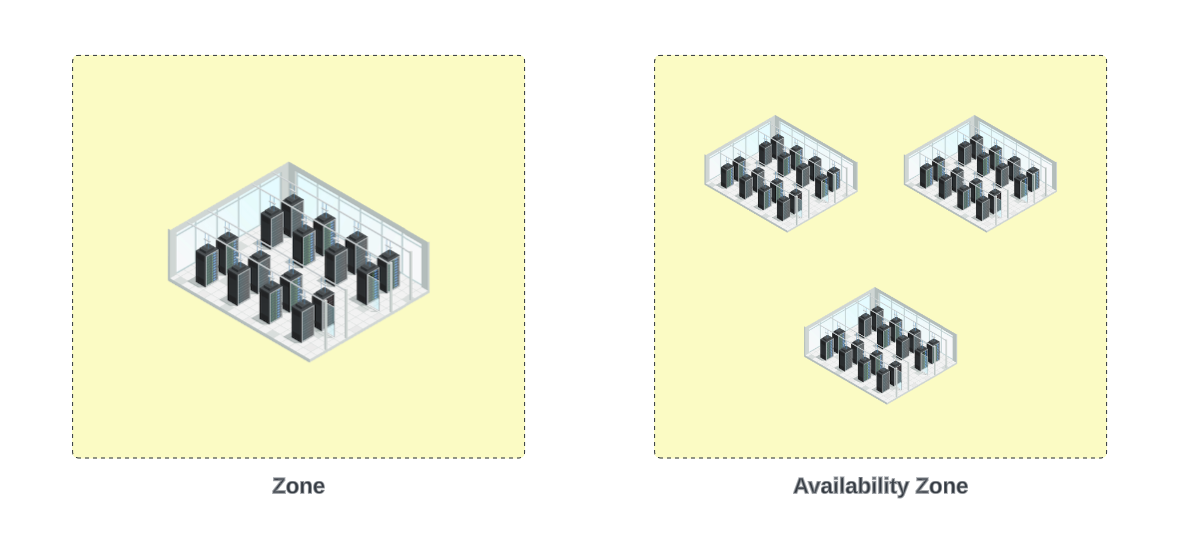Zone vs. Region in Google Cloud: Unraveling the Building Blocks of High-Availability Architecture
 Muthu Raj
Muthu Raj
In this blog, we embark on a journey through the realms of Google Cloud Platform (GCP), where we decode the intricacies of zones, availability zones, and regions. We'll dive into the definitions and distinctions that set each concept apart, shedding light on their vital roles in crafting robust infrastructures. Whether you're a seasoned cloud architect seeking to enhance your understanding or a newcomer navigating the cloud landscape, this exploration promises to demystify the architecture of high availability.
Data Center
A data center is a facility that houses a large number of interconnected computer servers, networking equipment, storage systems, and other hardware components. It's a centralized location designed to provide a controlled environment for storing, managing, processing, and distributing data and applications. Data centers are the backbone of modern computing and play a critical role in supporting various online services, applications, and cloud computing platforms.

Zone
A zone in GCP refers to a single data center within a region. Each zone is designed to be isolated from other zones in terms of power, cooling, and networking. Zones are meant to provide redundancy and fault tolerance within a region. Resources deployed in different zones can withstand failures or outages in a specific zone, ensuring high availability. Zones are identified by unique names, such as us-central1-a or europe-west2-b.
Availability Zone
An availability zone in GCP is a group of one or more data centers within a region that are interconnected by low-latency links. These data centers are designed to operate independently, with their own power and networking infrastructure. The primary purpose of availability zones is to provide fault tolerance and ensure that services remain available even if one or more zones experience issues. When you deploy resources across multiple availability zones, you enhance the resilience of your applications and services.
The key difference between a zone and an availability zone lies in the level of isolation and redundancy they provide. A zone represents a single data center, while an availability zone encompasses multiple data centers. Availability zones offer a higher degree of fault tolerance by distributing resources across distinct physical locations within a region.

Region
A region is a geographical area that contains one or more availability zones. Each availability zone within a region is a separate data center, and each region is designed to be isolated from other regions in terms of power, cooling, and networking. Regions are an essential concept for building highly available and resilient applications in the cloud.

One of the notable differences between Google Cloud Platform (GCP) and some other cloud providers is that in GCP, a single Virtual Private Cloud (VPC) can indeed span multiple regions. This capability provides more flexibility and options when designing and managing your network architecture. While a single VPC can span multiple regions in GCP, the specific resources within that VPC (such as subnets, instances, and services) are still confined to the respective regions where they are deployed. This multi-region VPC capability is a distinctive feature of GCP that can be advantageous for certain use cases.
Subscribe to my newsletter
Read articles from Muthu Raj directly inside your inbox. Subscribe to the newsletter, and don't miss out.
Written by

Muthu Raj
Muthu Raj
A passionate technologist, avid learner, and explorer of all things tech. Welcome to my digital corner where I share my insights, experiences, and discoveries in the world of technology.